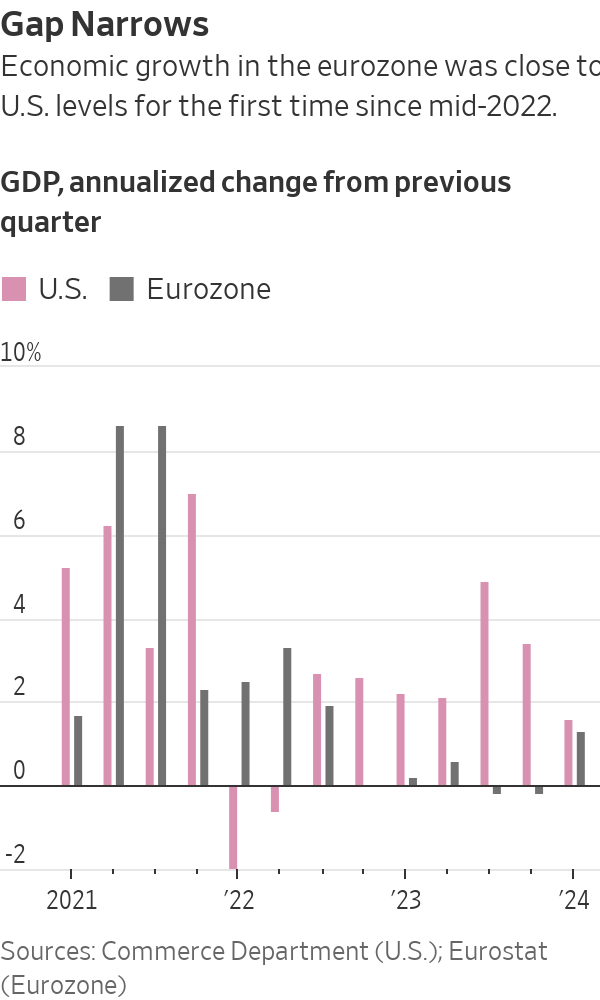How To Dip A Toe Into Bitcoin
What to buy, how much to invest and when to rebalance: a guide for the crypto-curious.
Does bitcoin belong in your financial plan?
With cryptocurrency starting to pop up in portfolios managed by institutional investors, it’s a question a growing number of individuals are asking themselves and their financial advisers.
The answer, advisers say, is: It depends—on factors including an investor’s tolerance for risk, financial capacity to absorb losses, and knowledge of the digital asset industry. Among those who use it for some clients, most recommend sticking to a small allocation, on the order of 1% to 2%.
In a recent survey of more than 500 financial advisers conducted by organizations including the Financial Planning Association, nearly half of advisers said clients have asked them about investing in cryptocurrencies, up from 17% in 2020. About 14% said they use or recommend it, compared with fewer than 1% last year.
Bitcoin “is only 10 years old,” said Ric Edelman, founder of advisory firm Edelman Financial Engines LLC and an investor in digital startups. “The focus has been on mining and trading it. But now people are beginning to go to the next level of how to incorporate it as part of a larger portfolio.”
To do it right requires more than a high risk tolerance.
Simon Tryzna, a financial adviser in San Francisco, says investors should have “an investment thesis” for why cryptocurrency belongs in their financial plan. For example, he said many of his tech-savvy clients believe that blockchain, the record-keeping technology behind bitcoin, can make the economy more efficient.
It’s also important to research the growing array of products that allow everyday investors to add virtual currencies to their nest eggs.
Because cryptocurrency is highly volatile, adding even a small amount to a portfolio may require you to revamp your asset allocation, reducing exposure to other risky investments including stocks, said Dan Egan, vice president of behavioral finance and investing at Betterment, an online advisory firm.
What follows are other steps to take before buying cryptocurrency.
Should I invest in crypto?
Cryptocurrency has the potential for significant gains. Over the past year, bitcoin’s price has risen from just over $9,000 to almost $32,000, after hitting a high in April of more than $64,000.
But Roger Aliaga-Diaz, head of portfolio construction at Vanguard Group, says “it’s a volatile investment prone to speculation that doesn’t belong in a prudent, well-balanced investment portfolio.”
Cryptocurrency is “largely unregulated and accompanied by considerable risk,” Mr. Aliaga-Diaz wrote in a recent article.
Since hitting a record high in April, bitcoin has lost about half its value as China intensified its crackdown on virtual currencies.
Yale University economist Aleh Tsyvinski, coauthor of a 2018 study that concludes that institutional investors should put about 1% to 5% of their portfolios into digital currencies, said individual investors comfortable with alternative investments, such as gold and private equity, should consider adding crypto, too.
“If you have 5% in alternatives, why not allocate 10% of that to crypto?” he said.
Because virtual currencies behave in a “completely different” manner than stocks, bonds and other traditional investments, he said they can enhance returns by rising when other assets fall. “It’s a pretty good investment for diversification.”
It’s an argument Mr. Aliaga-Diaz doesn’t buy. He warns against paring allocations to stocks and bonds to make room for something that lacks “intrinsic economic value” and generates “no cash flows, such as interest payments or dividends, which can explain their prices.”
“Cryptocurrency prices depend mostly on speculation about their adoption and use.”
John Piershale, an adviser in Crystal Lake, Ill., said while he recommends against crypto for the vast majority of his clients, he has put up to a 2% allocation into an exchange-traded fund that buys shares in companies involved in blockchain technology for a few clients who can withstand “large swings in value.”
How much should I invest?
Those who feel they can handle the risks of cryptocurrency should start small and buy a fixed amount at regular intervals until reaching their desired allocation, a strategy that reduces the odds of buying at a market high.
Mr. Egan said anything over 1% of a portfolio is “an aggressive allocation” given that cryptocurrency represents just 0.5% of the value of global stocks and bonds.
“If you become very knowledgeable and are heavily engaged, then you can go further than 1%,” said Mr. Edelman. “But for most investors building a diversified portfolio, 1% is enough.”
What should I buy to get exposure to cryptocurrency?
To buy or sell cryptocurrency, you can open an account at a cryptocurrency exchange such as Coinbase Global Inc. or a trading platform that offers it, such as Robinhood Markets Inc.
On Coinbase, an investor wanting to buy $100 of bitcoin would pay about $3.49 in fees, and potentially more with some payment methods like debit cards. Robinhood charges no commissions, but routes customer orders to trading firms that pay it, a practice critics say may result in customers not getting the best prices.
Many big brokerage firms, including Fidelity Investments and Charles Schwab Corp., don’t allow customers to buy or sell cryptocurrency. But their clients can purchase shares in trusts that invest in digital assets from companies including Grayscale Investments LLC. Grayscale Bitcoin Trust charges a 2% annual fee and can trade at a premium or discount to the value of the bitcoin it holds.
Some advisers recommend buying stock in companies including Coinbase or in ETFs that invest in digital asset companies.
Should I diversify among cryptocurrencies?
Some cryptocurrency fans favour bitcoin. Others cite the dot-com shakeout in recommending an assortment.
Because cryptocurrency scams are common, do research and invest only a token amount in unknown names, said Mr. Egan.
Does bitcoin belong in my IRA?
Some clients who trade frequently want cryptocurrency in retirement accounts, since they can reinvest the profits tax-free.
But because firms including Schwab and Fidelity don’t allow IRA owners to buy virtual currencies, such investors must use niche IRA providers that specialize in alternative investments. Be aware of the fees these IRA custodians charge.
Stick with companies regulated by federal or state banking authorities, said Mr. Edelman.
For an asset with the potential for big gains, “the best place to hold it is in a Roth IRA,” said IRA specialist Ed Slott. Investors contribute after-tax money to these accounts, but gains accrue tax-free. Money can be withdrawn tax-free too, provided a Roth owner is 59½ or older and the account has been open at least five years.
It may make sense for some investors to hold cryptocurrency in a taxable account, Mr. Slott said. Provided you hold the investment for longer than a year, you will pay the long-term capital gains tax rate of up to 23.8% when you sell at a profit and can offset gains with capital losses. In contrast, with a traditional IRA, you will pay income tax of up to 37% on your withdrawals.
How often should I rebalance?
While many advisers recommend taking a buy-and-hold, “set-it-and-forget-it” approach towards a diversified portfolio and rebalancing annually to desired portfolio allocations, it is a good idea to monitor volatile holdings such as digital currencies more often.
Mr. Tryzna said a client who bought bitcoin and ether several years ago saw these holdings appreciate from 5% of his portfolio to 50%, before paring the position to 20%.
Mr. Egan recommends using a consistent approach to rebalancing, such as doing it monthly or when your allocation drifts by one percentage point from your target.
If you hold cryptocurrency in a taxable account, it might make sense to let the portfolio drift a little longer before rebalancing, unless you can offset taxable gains with losses, said Mr. Egan. He said Betterment tries to avoid sales that trigger the short-term capital gains rate of up to 40.8% on assets held for a year or less.
Reprinted by permission of The Wall Street Journal, Copyright 2021 Dow Jones & Company. Inc. All Rights Reserved Worldwide. Original date of publication: July 16, 2021
 Copyright 2020, Dow Jones & Company, Inc. All Rights Reserved Worldwide. LEARN MORE
Copyright 2020, Dow Jones & Company, Inc. All Rights Reserved Worldwide. LEARN MORE
This stylish family home combines a classic palette and finishes with a flexible floorplan
Just 55 minutes from Sydney, make this your creative getaway located in the majestic Hawkesbury region.
A sharp rebound in tourism in Europe’s sunbelt powers its economic rebound as core manufacturing centres struggle to recover
Europe’s economy has a north-south divide—and now it’s the poorer south that is powering the region’s return to growth.
Southern Europe, which for decades has had lower growth, productivity and wealth than the north, powered an upside-down recovery on the continent at the start of the year. Buoyant tourism revenue around the Mediterranean helped to offset sluggishness in Europe’s manufacturing heartlands.
The south’s transformation from laggard into growth engine reflects both a rapid rebound in visitor numbers from the collapse during the Covid-19 pandemic and a series of blows the continent’s large manufacturing sector has suffered, from surging energy prices to trade conflicts.
Now growth in the south is more than offsetting the north’s manufacturing malaise: As a whole, the eurozone economy grew at an annualised rate of 1.3% in the first quarter, ending nearly 18 months of economic stagnation in a sign that the currency area is recovering from the damage done by Russia’s invasion of Ukraine.
It was the eurozone’s strongest performance since the third quarter of 2022, and approached the U.S. economy’s 1.6% first-quarter growth rate, which was a slowdown from a racy pace of 3.4% at the end of last year.
In the 2010s, Germany helped to drag the continent out of its debt crisis thanks to strong exports of cars and capital goods. Between 2021 and 2023, Italy, Spain, Greece and Portugal contributed between a quarter and half of the European Union’s annual growth, according to a report last year by French credit insurer Coface —a trend now confirmed and amplified in the latest data.

In the first quarter, Spain was the fastest-growing of the big eurozone economies. It and Portugal recorded growth of 0.7% in the three months through the end of March from the previous quarter, while Italy’s economy grew by 0.3%. France and Germany both grew by 0.2%, the latter rebounding from a 0.5% quarter-on-quarter contraction at the end of last year.
This means Germany’s economy has grown by 0.3% in total since the end of 2019, compared with 8.7% for the U.S., 4.6% for Italy and 2.2% for France, according to UniCredit data.
In Spain, strong growth “seems to have been entirely due to strong tourism numbers,” said Jack Allen-Reynolds, an economist with Capital Economics. Tourism accounts for around 10% of the economies of Spain, Italy, Greece and Portugal.
The euro rose by about a quarter-cent against the dollar, to $1.0725, after the latest growth and inflation data were published.
The recovery comes as the European Central Bank signals it is preparing to reduce interest rates in June after a historic run of increases since mid-2022 that took it the key rate to 4%. Inflation in the eurozone remained at 2.4% in April, while underlying inflation cooled slightly, from 2.9% to 2.7%, according to separate data published Tuesday.
“The ECB hawks will point to the strong GDP number as [an] argument that ECB can take its rates lower gradually,” said Kamil Kovar, senior economist at Moody’s Analytics.
The eurozone economy has flatlined since late 2022 as Russia’s attack on its neighbor sent food and energy prices soaring in Europe and sapped business and household confidence. Gross domestic product fell in both the third and fourth quarters of last year, meeting a definition of recession widely used in Europe, but not in the U.S.
Southern Europe is one of only a handful of regions where international tourist arrivals returned to pre pandemic levels last year, according to United Nations data. Tourism revenue across the EU was one-quarter higher in the three months through the end of last June than in the same period in 2019, according to Coface data.
The recovery in international tourism was “notably driven by the arrival of many Americans who…were able to take advantage of favorable exchange rates,” Coface analysts wrote. “On the other hand, the end of the zero-Covid policy in China has initiated a gradual return of Chinese tourists, although remaining below 2019 levels.”
In Portugal, the number of foreign tourists hit a record of more than 18 million last year, up 11% compared with the prepandemic year of 2019, official data showed in January. American tourists in particular have returned to Europe in force.
Tourist numbers in Asia Pacific and the Americas continued to lag 2019 levels by 35% and 10% last year, respectively, the data show.
It is unclear how much further the tourism boom can run, but economists expect the region’s economic recovery to strengthen later this year as cooling inflation boosts household spending power and lower energy costs aid factory output.
Recent surveys point to an improved outlook for growth. Consumer confidence has risen to its highest level in two years, and a leading business-sentiment index has shown steady improvement from the start of 2024.
“We think that the combination of a robust labor market, comparatively strong wage hikes and lower inflation compared with last year will finally lead to a moderate recovery in consumer spending in the next few quarters,” said Andreas Rees , an economist with UniCredit in Frankfurt.
Consumers are going to gravitate toward applications powered by the buzzy new technology, analyst Michael Wolf predicts
Just 55 minutes from Sydney, make this your creative getaway located in the majestic Hawkesbury region.























